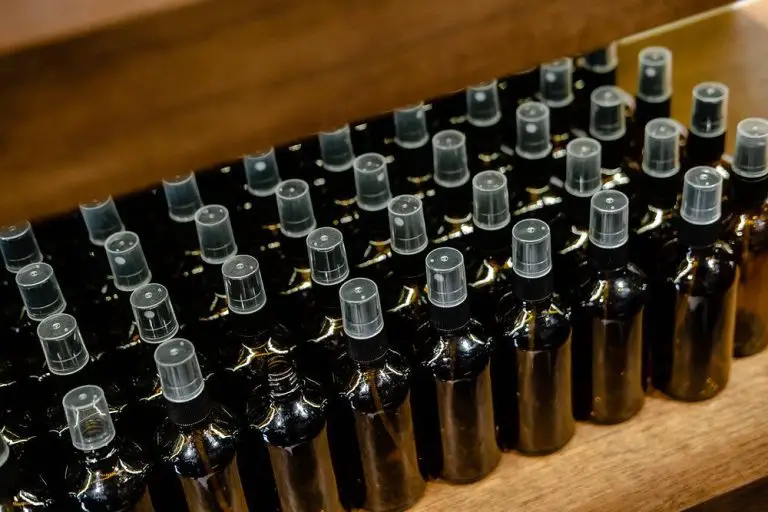What Is The Largest Essential Oil Company?
Essential oils are concentrated extracts derived from plants such as flowers, herbs, and trees. They contain the aroma and essence of the plant they come from, and have been used for health, beauty, and spiritual purposes for thousands of years. In modern times, essential oils are most commonly used in aromatherapy and personal care products.
The essential oil industry refers to the companies and market involved in the production and sales of essential oils worldwide. The industry has grown tremendously in recent decades due to the popularity of aromatherapy, natural health products, and increased consumer interest in plant-based and organic products. It is now a multi-billion dollar market, with the top essential oil companies generating hundreds of millions in annual revenues.
In this article, we will explore the largest company in the essential oil industry today. We will provide an overview of this company, examine its operations and sales, as well as some of the criticisms it has faced over the years.
History of Essential Oils
The use of aromatic essential oils dates back thousands of years. The first records of essential oils come from ancient India, Persia, and Egypt over 6,000 years ago. Essential oils were used in ancient Chinese and Indian medicine between 3000 and 2000 BC (1). The ancient Egyptians used essential oils as part of their religious rituals and medical practices. Essential oil residues have even been found in clay jars from ancient Egyptian tombs.
Essential oils continued to be popular for their medicinal properties in ancient Greece and Rome. However, after the fall of the Roman Empire, the use of essential oils declined in Europe during the Middle Ages. It wasn’t until the 11th century that essential oils regained popularity through Arabic Spain and Persia. By the 13th century, essential oils were being distilled for medicinal use in monasteries across Europe.
The modern popularity of essential oils began in the early 20th century when French chemist Rene-Maurice Gattefosse burned his hand in a laboratory explosion. He immersed his hand in lavender oil and found it provided relief from the burn. Gattefosse continued to research essential oils and coined the term “aromatherapy” in 1928. Since then, the use of essential oils for health, cosmetic, cleaning, and spiritual purposes has steadily grown around the world.
Current Essential Oil Market
The global essential oil market has been experiencing strong growth in recent years. According to a report by MarketsandMarkets, the market size was valued at USD 12.78 billion in 2022 and is projected to reach USD 22.19 billion by 2027, growing at a CAGR of 11.7% during the forecast period.
The increasing demand for natural ingredients in food & beverages, personal care products, aromatherapy and home care products is driving the essential oil market. The rise of the wellness trend and growing consumer preference for natural alternatives over synthetic ingredients has led to surging demand for essential oils.
Europe accounted for the largest share of the global essential oil market in 2022. The increasing use of essential oils in pharmaceuticals, cosmetics and food & beverages is fueling market growth in the region. The Asia Pacific market is estimated to witness the highest CAGR during the forecast period owing to rising consumer disposable incomes in countries like China and India.
The key drivers propelling market growth include the growing adoption of essential oils in alternative medicine and aromatherapy applications. The increasing use of essential oils in cleaning and home products is also boosting product demand. The rising popularity of essential oil infused personal care, cosmetic and grooming products is expected to open lucrative opportunities for essential oil suppliers and producers.
Overview of Major Essential Oil Companies
The essential oil industry has grown substantially over the past decade, with several major companies dominating the market. Here is a brief overview of the top 5 essential oil companies:
Young Living – Founded in 1993, Young Living is currently the largest essential oil company in the world. They focus on distributing 100% pure, therapeutic-grade essential oils and oil-infused products. Young Living has over 6 million members and does about $1.5 billion in annual sales.
doTERRA – doTERRA was founded in 2008 and has quickly grown to be Young Living’s biggest competitor. They distribute certified pure therapeutic grade essential oils through independent distributors and wellness advocates. doTERRA does about $1 billion in annual sales.
Plant Therapy – Founded in 2011, Plant Therapy has a mission to provide high-quality essential oils to every household in America at fair prices. They offer over 100 different single oils and synergy blends, available through their website and Amazon.
NOW Foods – Founded in 1968, NOW Foods sells a variety of natural health products including essential oils. They focus on high quality at affordable prices, making oils accessible to the average consumer.
Edens Garden – A family-owned company founded in 2009, Edens Garden offers a line of certified organic essential oils sourced from around the world. They focus on sustainable and ethical practices.
Young Living Profile
Young Living was founded in 1993 by Donald Gary Young in Lehi, Utah after researching the healing properties of essential oils for over twenty years. [1] Young started studying herbs and essential oils after suffering a near-death logging accident at age 24. This early research led him to study herbal remedies and essential oils more in depth.
Today, Young Living is headquartered in Lehi, Utah and has offices all around the world. The company offers over 600 single and blended essential oils, dietary supplements, and personal care products. [2] Young Living has a large global presence, with over 6 million members worldwide and products sold in nearly every market.
Young Living’s Operations
Young Living employs over 6,000 people worldwide and operates multiple facilities around the globe. The company has over 27 corporate and partner farms totaling nearly 300 acres, with major facilities located in Utah, Idaho, France, Ecuador, Australia, and Singapore.
Some key facts about Young Living’s operations include:
- Over 3,000 employees work at the company’s headquarters in Lehi, Utah.
- The largest farm is the Mona Lavender farm in Utah spanning 140 acres.
- International farms are located in Ecuador, France, Croatia, Israel, and Oman.
- Warehouses and production facilities are located in Utah, Idaho, Australia, Singapore, Japan, Taiwan, and the UK.
- In 2018, Young Living opened a 50,000 square foot headquarters in Singapore.
Young Living has grown into a global essential oils empire with facilities and farming operations across several continents. The company continues to expand its reach by acquiring new farms and production facilities to meet growing worldwide demand.
Young Living’s Sales and Revenue
Young Living has seen tremendous growth in sales and revenue over the years. The company reported total revenues of $1.52 billion in 2019, up from just over $1 billion in 2018. This represents an impressive annual growth rate of over 40%.
Young Living’s sales primarily come from their network of independent distributors who sell the products directly to consumers. The company relies on multi-level marketing, where existing distributors recruit new distributors below them. This creates a “downline” network where upline distributors earn commissions on the sales of their downline distributors.
As of 2019, Young Living had over 6 million active distributors worldwide. This large and growing distributor network has fueled the rapid growth in sales. Between 2016 to 2019 alone, Young Living’s distributor count grew by over 70%. The company’s dominance in the essential oils market, through brand awareness and distributor recruitment, suggests its sales trajectory will continue growing at a strong pace.
In summary, Young Living is the clear leader in essential oils with over $1.5 billion in annual revenues and sales growing by 40%+ annually. Their network of millions of distributors gives them unmatched reach for an essential oils brand.
Young Living’s Marketing
Young Living utilizes a multi-channel marketing strategy to promote its essential oil products and direct sales business opportunity. The company relies heavily on social media, particularly Instagram, to showcase its products and promote its branding (Sarah Fox | Young Living on Instagram https://www.pinterest.com/pin/sarah-fox–71565081576973251/). Young Living encourages its distributors to share photos and videos of themselves using Young Living products on their personal social media pages. This word-of-mouth marketing from distributors provides powerful social proof for the brand.
Young Living also utilizes its website, blog, YouTube videos, virtual and in-person events, and printed catalogs to educate consumers about essential oils and recruit new distributors (ADV420 Final Presentation: A brand and its marketing strategy https://www.slideshare.net/NeenaBrunngraeber/adv420-final-presentation-a-brand-and-its-marketing-strategy). The company’s branding focuses on health and wellness, connection to nature, and living a natural lifestyle. Young Living portrays itself as a values-driven company dedicated to philanthropy and corporate responsibility.
Criticisms of Young Living
Young Living has faced criticism over the years regarding some of its products and business practices. One of the most notable controversies involved a lawsuit from competitor doTerra in 2012. doTerra claimed that former Young Living executives used trade secrets to start their new company, alleging breach of contract and theft of proprietary information (Source). The lawsuit was eventually settled in 2014.
Additionally, some have accused Young Living of operating like a pyramid scheme that profits mainly from recruiting new distributors rather than selling products to consumers (Source). Critics argue the company’s multi-level marketing structure rewards distributors for building “downlines” underneath them. However, Young Living maintains its focus is on selling quality essential oils.
There have also been questions around the medical claims made about Young Living’s oils. The company has gotten warnings from the FDA over unsupported health assertions. Some also take issue with the pseudoscience spread among the Young Living community claiming oils can cure major ailments.
Overall, while Young Living has built a large base of loyal followers, the company has dealt with controversies around its business structure, product claims, and lawsuits from competitors over the years. Despite criticism, Young Living remains the largest essential oil company globally today.
Conclusion
As covered throughout this content, Young Living stands out as the largest essential oil company due to several key factors. With over 20 years of market experience and operations spanning the globe, Young Living has established itself as an essential oil giant. The company’s extensive product line, composed of hundreds of single oils and oil-infused products, allows Young Living to reach a wide consumer base. While Young Living has faced some controversies regarding its marketing and business practices, its large member base of over 5 million and estimated billion-dollar valuation cement its status as the essential oil industry leader.
Young Living’s vertical integration, owning its own farms, distilleries, laboratories, and production facilities, also gives the company unmatched scale and control over essential oil sourcing and manufacturing. This helps Young Living secure robust inventories of oils and produce large sales volumes consistently. Though doTERRA and other essential oil companies continue to grow in popularity, currently no competitor matches Young Living in terms of global reach, brand recognition, or sheer revenue size. Given its first-mover advantage and aggressive network marketing approach, Young Living is poised to continue dominating the essential oil space into the foreseeable future.





